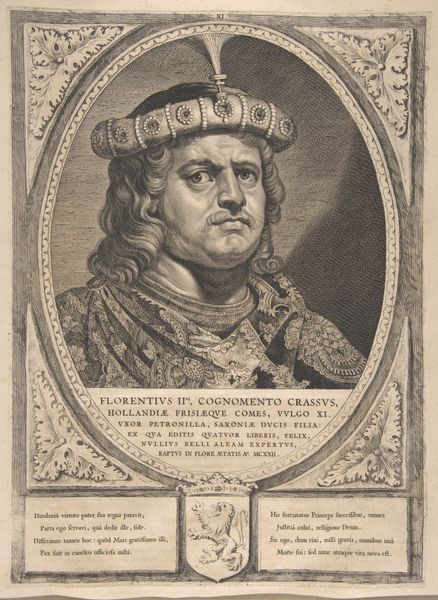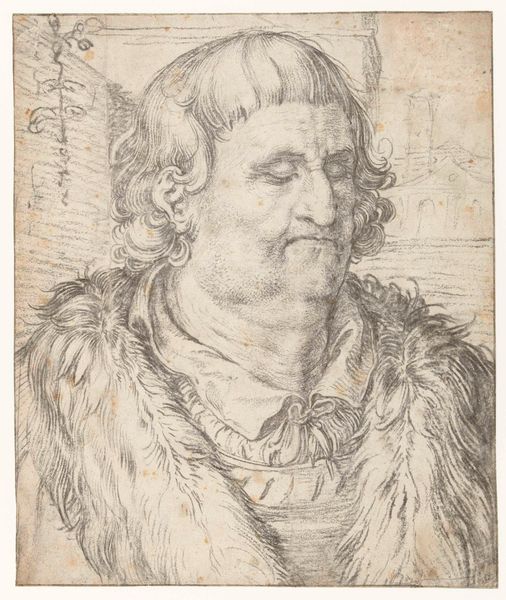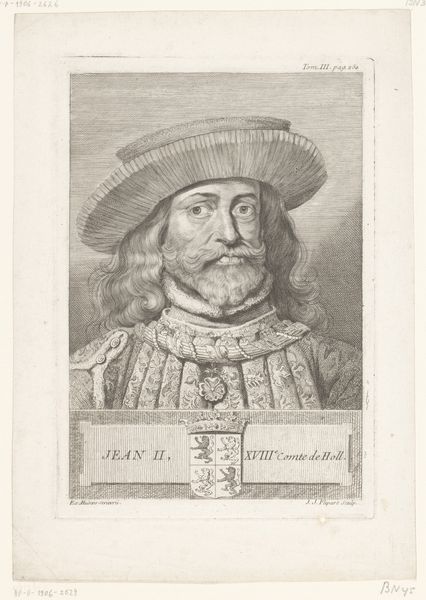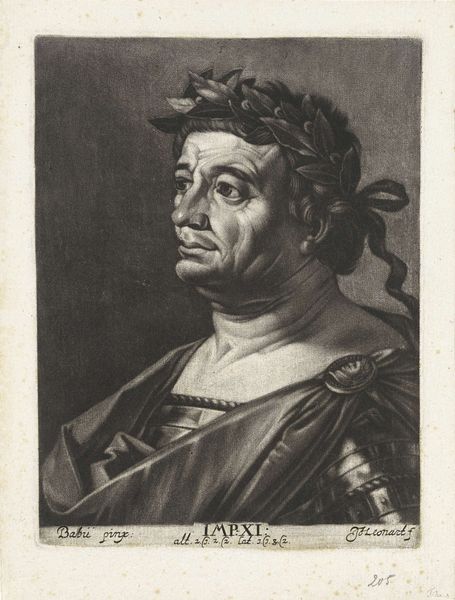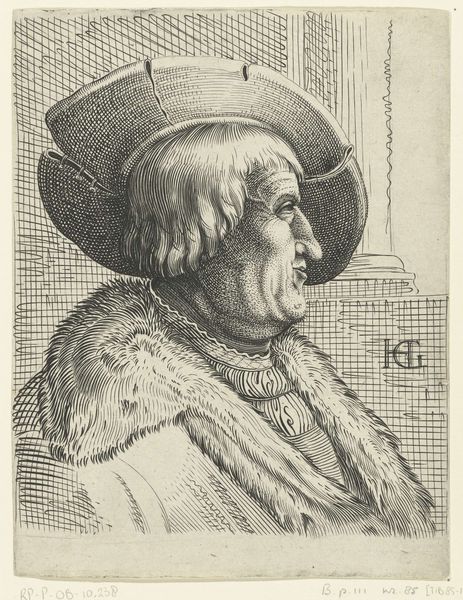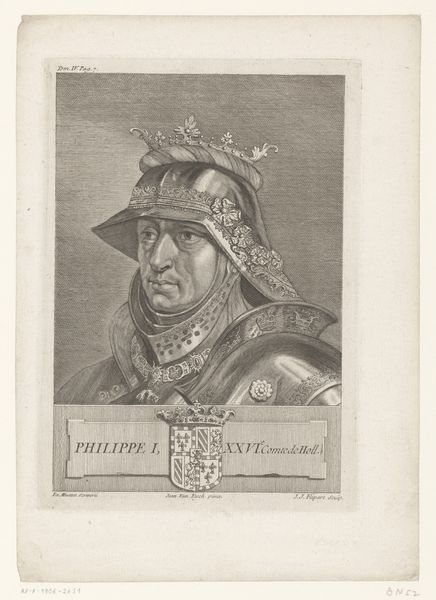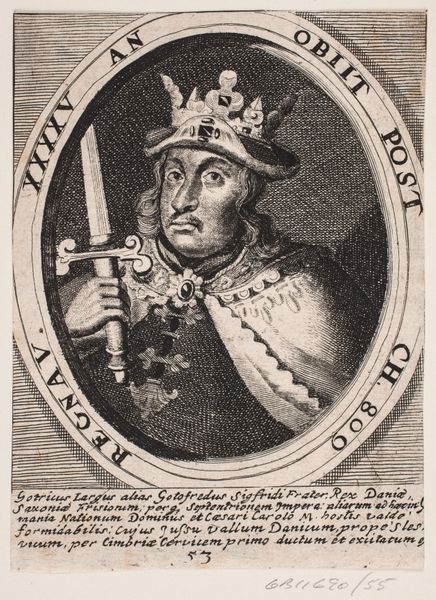
print, etching, engraving
#
portrait
#
baroque
# print
#
etching
#
old engraving style
#
caricature
#
portrait drawing
#
history-painting
#
engraving
Dimensions: height 193 mm, width 130 mm
Copyright: Rijks Museum: Open Domain
Editor: This is a print entitled "Portret van Floris II van Holland" made in 1757 by François Flipart, using etching and engraving techniques. It's a stately portrait, but something about the subject's expression feels a bit... off, almost cartoonish. What compositional elements stand out to you? Curator: Indeed. Let us set aside notions of historical accuracy and narrative for a moment, and consider the formal structure of this print. The artist employs a clear hierarchical structure. Observe how the meticulous hatching and cross-hatching define volume and texture, differentiating surfaces. What do you notice about the rendering of the face versus the costume? Editor: Well, the face has very fine lines, creating softer transitions, while the robes have more angular and dense patterns. Is this contrast in texture intentionally distorting our perception? Curator: Precisely. This calculated distortion amplifies the tension between surface and depth, further compounded by the strategic play of light and shadow. Note how Flipart masterfully uses line to simulate fabric and adornment, thereby generating a dynamic interplay between two-dimensionality and illusionistic depth. Observe how it disrupts the surface while emphasizing the graphic qualities inherent in etching. Editor: It seems the focus isn’t on accurately portraying Floris II, but rather showcasing Flipart’s technical skill with the engraving tools, juxtaposing different textures. Curator: Precisely. By analyzing the formal properties—the lines, textures, and composition—we apprehend a dimension beyond mere representation. A semiotic reading of these graphic elements shows Flipart questioning the boundaries of realism within the portrait genre. The portrait then becomes a self-reflexive statement about the very act of artistic creation and imitation. Editor: I see! So, it is about understanding how these formal elements like line, texture, and composition influence how we perceive and interpret the work rather than focusing on the person in the image or what he did. I have to admit I’ve learned how much the structural approach can enrich appreciation of an image and give you a more objective and defensible point of view. Curator: I agree completely. Focusing on the elements shows a lot that one can take into account when judging a portrait as good, bad, indifferent and can expand how an ordinary individual appreciates form itself, or not.
Comments
No comments
Be the first to comment and join the conversation on the ultimate creative platform.
